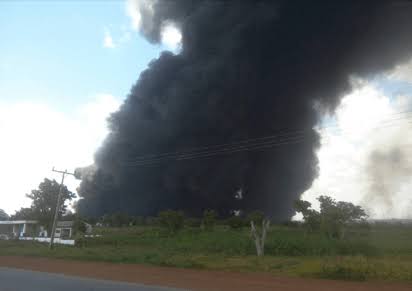There is an outbreak of Yellow Fever in Nigeria.
Already, nine people have died as a result of the disease.
This is according to The Nigeria Centre for Disease Control, NCDC.
In a report which it released the outbreak has been confirmed in 12 local government areas across seven states of the federation.
The affected states are: Kwara, Kano, Niger, Nasarawa, Kebbi, Kogi and Zamfara.
NCDC said the latest outbreak of Yellow Fever began in Ifelodun Local Government Area in Kwara State.
A seven years old girl was discovered to have the disease in September, 2017.
She was said not have ever been vaccinated and not travelled outside the state in the last two years before she fell sick.
According to the centre since the first incident recorded in Kwara State, there had been others in Abia, Borno, Kogi, Kwara, Kebbi, Plateau, Zamfara, Enugu, Oyo, Anambra, Edo, Lagos, Kano, Nasarawa, Katsina and Niger states.
NCDC said in the tests conducted on 230 blood samples collected, 63 tested positive to the disease and one was inconclusive.
The centre said the samples were also later sent to the World Health Organisation.
The NCDC stated that “Of the 64 (positive and inconclusive) samples sent to the World Health Organisation, WHO laboratory in Dakar, Senegal for laboratory confirmation, 32 were positive, 24 negative and seven results are still pending.”
NCDC said nine deaths were confirmed had resulted from Yellow Fever.
Read also: Fire service rescues woman from pit latrine
Deaths suspected to have occurred as a result of Yellow Fever were said to be about 45.
Below are the facts on Yellow Fever according to the World Health Organisation, WHO:
Yellow fever is an acute viral haemorrhagic disease transmitted by infected mosquitoes. The “yellow” in the name refers to the jaundice that affects some patients.
Symptoms of yellow fever include fever, headache, jaundice, muscle pain, nausea, vomiting and fatigue.
A small proportion of patients who contract the virus develop severe symptoms and approximately half of those die within 7 to 10 days.
The virus is endemic in tropical areas of Africa and Central and South America.
Since the launch of the Yellow Fever Initiative in 2006, significant progress in combating the disease has been made in West Africa and more than 105 million people have been vaccinated in mass campaigns.
No outbreaks of yellow fever were reported in West Africa during 2015.
Large epidemics of yellow fever occur when infected people introduce the virus into heavily populated areas with high mosquito density and where most people have little or no immunity, due to lack of vaccination.
In these conditions, infected mosquitoes transmit the virus from person to person.
Yellow fever is prevented by an extremely effective vaccine, which is safe and affordable. A single dose of yellow fever vaccine is sufficient to confer sustained immunity and life-long protection against yellow fever disease and a booster dose of the vaccine is not needed. The vaccine provides effective immunity within 30 days for 99% of persons vaccinated.
Good supportive treatment in hospitals improves survival rates. There is currently no specific anti-viral drug for yellow fever.











